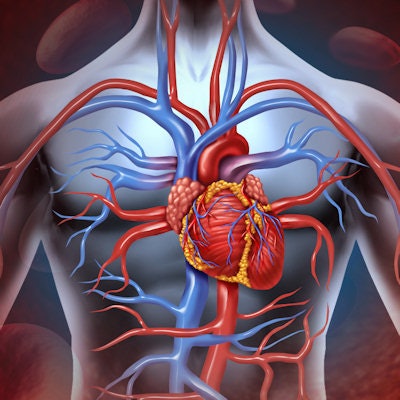
Statin therapy can help mitigate the risk of death in patients with nonobstructive coronary artery disease (CAD), even in those with the lowest levels of calcium and atherosclerosis evident on coronary CT angiography (CCTA) scans, according to an article recently published online in PLOS One.
As part of an ongoing international trial, Coronary CT Angiography Evaluation for Clinical Outcomes (CONFIRM), senior investigator Dr. James Min of Weill Cornell Medicine in New York City and colleagues set out to determine the effect of statin medication on patients with varying degrees of severity of nonobstructive CAD.
Current guidelines recommend that clinicians offer statin therapy -- which numerous studies have confirmed can reduce mortality risk in heart disease -- to individuals who have a CT coronary artery calcium (CAC) score of 300 or greater, Min and colleagues noted. However, statins could also help reduce the risk of major adverse cardiac events, including death, in patients with lower calcium scores as well as in those with an overall low atherosclerotic burden.
To test this hypothesis, the researchers acquired the CCTA scans of 8,016 patients with nonobstructive CAD who received or did not receive statin medication. There was an incidence rate of 1.2% for all-cause mortality and 2.1% for major adverse cardiac events in these patients during the 2.5-year follow-up period (PLOS One, December 12, 2018).
The group found that statin therapy reduced the risk of mortality and other adverse events at nearly all levels of calcium and atherosclerosis scores measured on CCTA scans -- even for patients with very low CT CAC and segment involvement scores (SIS). SIS measures the extent of atherosclerosis in patients based on the number of coronary artery segments (up to 16) found to contain plaques on CCTA scans.
| CT-based mortality risk in heart disease patients with and without statin therapy | ||
| Hazard ratio without statin therapy | Hazard ratio with statin therapy | |
| CT coronary artery calcium score | ||
| 1-99 | 1.65 | 0.56 |
| 100-299 | 2.19 | 1.19 |
| 300+ | 2.98 | 3.05 |
| CT segment involvement score | ||
| 1 | 1.62 | 1.37 |
| 2-3 | 2.48 | 1.62 |
| 4+ | 2.95 | 0.84 |
The patients' risk of adverse cardiac events progressively increased as the CCTA calcium and atherosclerosis scores increased, and statins helped attenuate this risk at most scores regardless of plaque severity.
"Importantly, we identified no lower limit of CAC wherein statin therapy did not mitigate mortality risk," the authors wrote. "These findings suggest that a binary cutoff of CAC [of at least 300] for guiding statin treatment may not be warranted, as those with lower scores appear to also derive significant risk attenuation."
The same reduction in risk also applied to heart disease patients with a low SIS, extending the potential benefit of statin therapy for patients with any degree of atherosclerosis, they noted. These current findings regarding early statin therapy are promising and warrant further large-scale investigation.



















